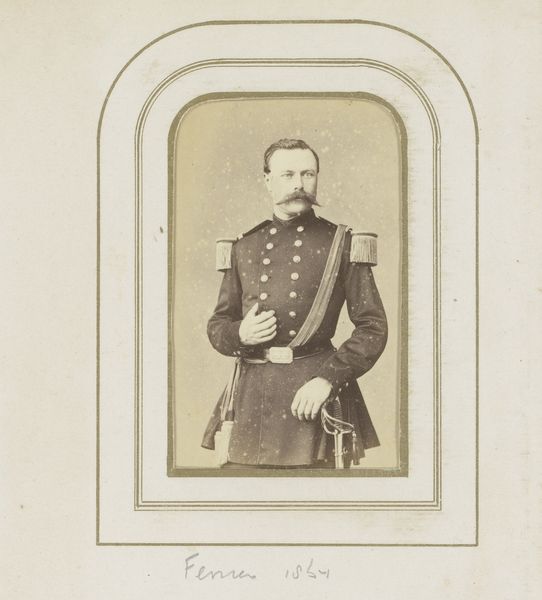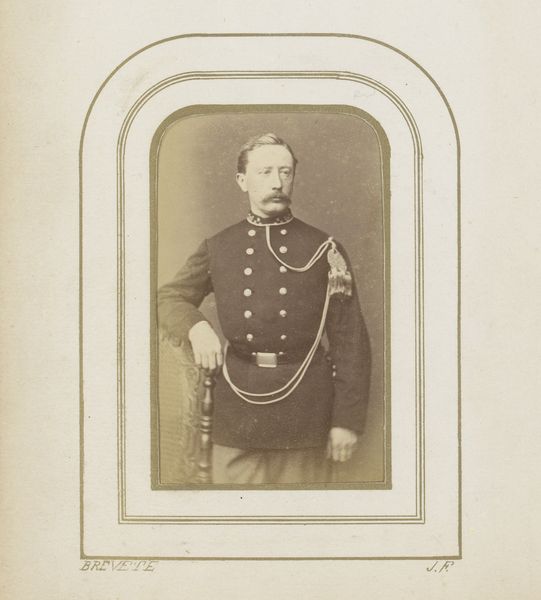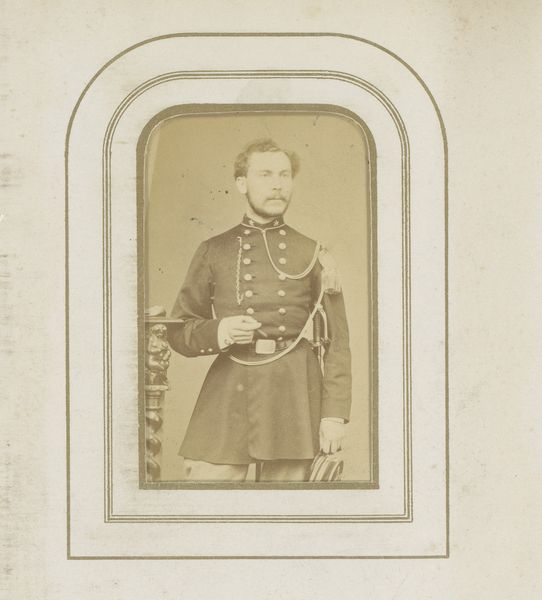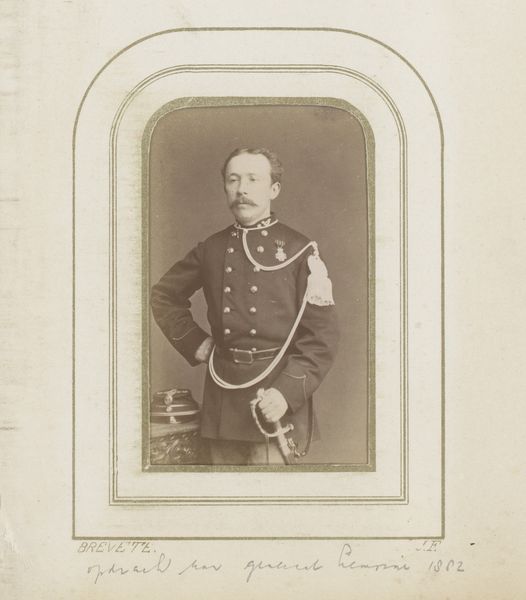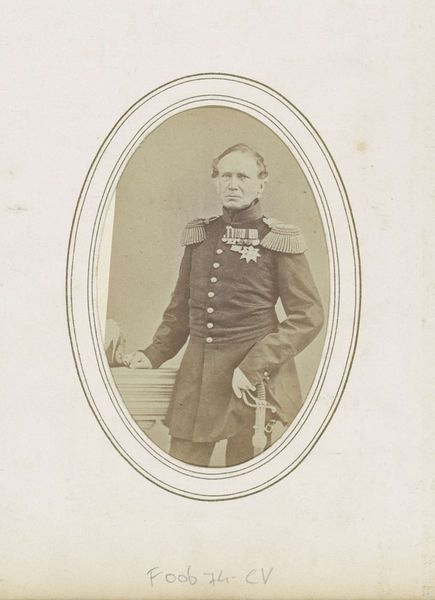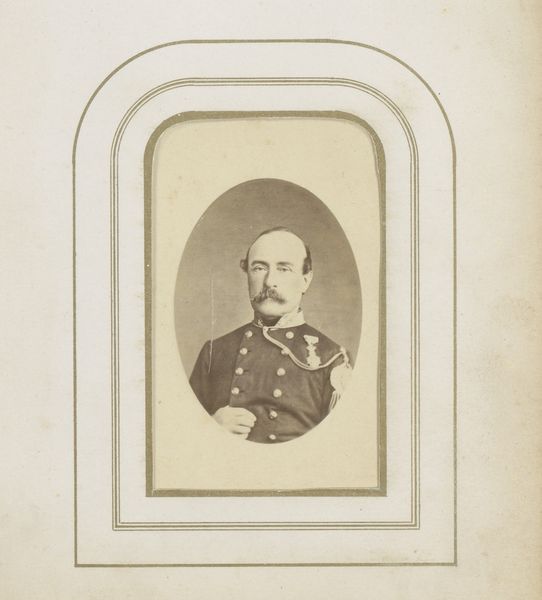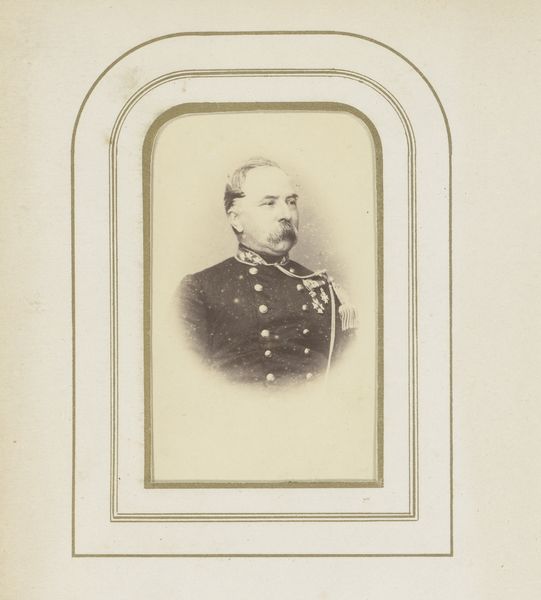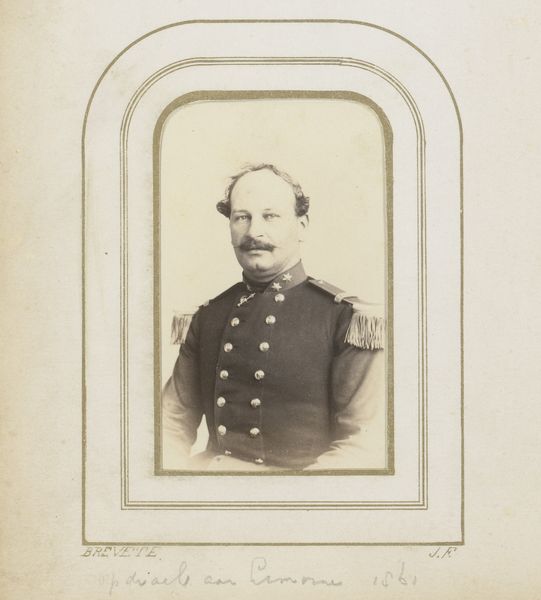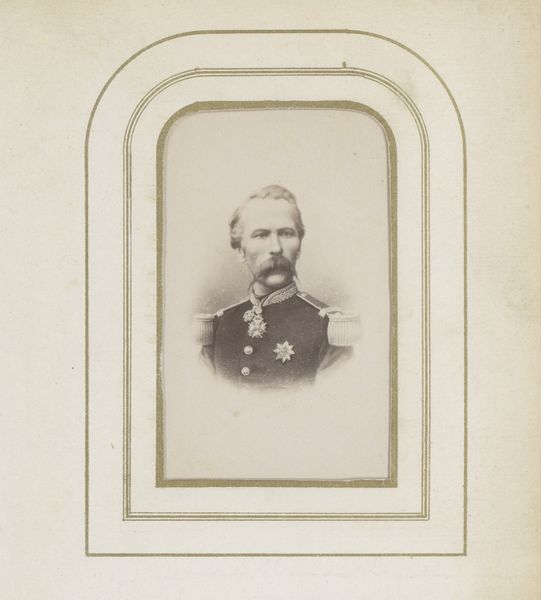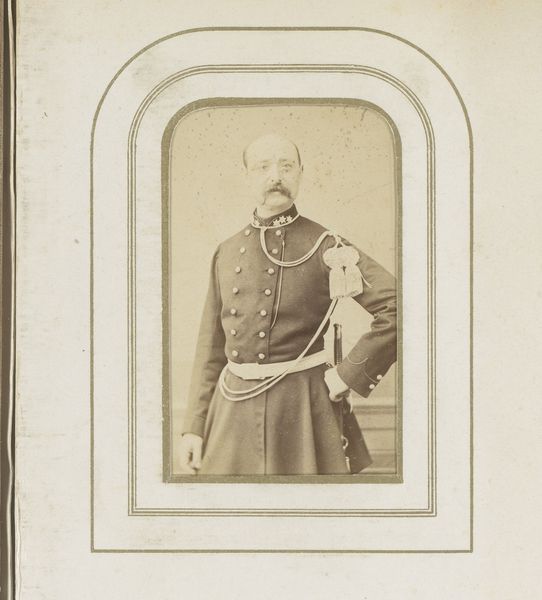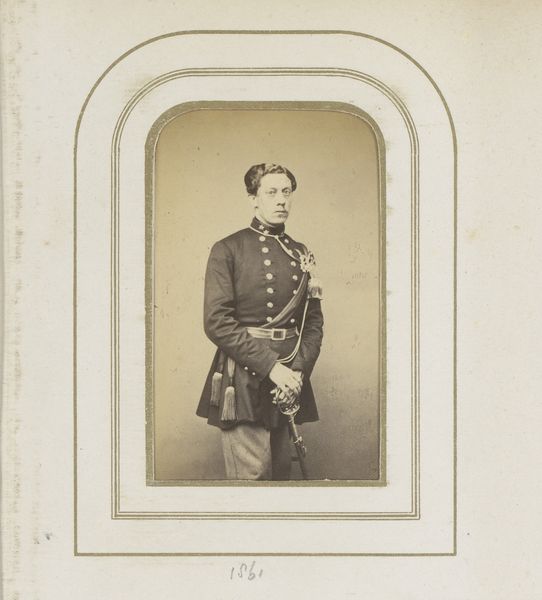
daguerreotype, photography
#
portrait
#
daguerreotype
#
photography
#
historical photography
#
19th century
#
history-painting
Dimensions: height 83 mm, width 50 mm
Copyright: Rijks Museum: Open Domain
Curator: Well, let's take a look at this captivating portrait. We are looking at a daguerreotype from sometime between 1860 and 1872, titled "Portret van een man in uniform met zwaard"—or "Portrait of a Man in Uniform with Sword." The photograph is attributed to Charles Billotte & Cie. Editor: Wow. He just exudes an air of quiet authority, doesn't he? There's almost a sense of melancholy too, beneath that impressively groomed moustache. Curator: That melancholic air is very much in keeping with the visual language of military portraiture from this period. We often see this use of formality as a veil over more complex, turbulent emotions tied to duty and sacrifice. Editor: Sacrifice, definitely. He holds his hat so limply... it’s like he is presenting it almost as offering. Do you think he had any say in how his image was being crafted here, or was this purely the photographer asserting a certain narrative? Curator: That’s an excellent point. Daguerreotypes, though groundbreaking, still demanded a degree of stillness that necessarily limited individual expression, I suppose. However, the accoutrements, the meticulously rendered uniform—they all contribute to an established iconography. Editor: Absolutely, those buttons going all the way up—they close him off! And the framing just adds this feeling of old time, like looking at it with a tunnel vision from nowadays. It almost looks like peering through time itself. Curator: It’s the distancing effect of the medium, isn't it? It emphasizes the subject as an artifact, while also drawing our attention to the very tangible history captured within. These photographic processes gave enormous authority to representations and, crucially, aided in constructing and solidifying national identities through the portraits of their heroic individuals. Editor: He seems forever suspended between the sharpness of duty and the shadow of mortality. Knowing a little about the period gives it some depth too, right? Curator: Indeed. Photography at this time became intertwined with commemorating loss, memorializing individuals affected by national upheaval. He stands now as a symbolic echo, preserved in silver and light, a solemn reminder of a past era. Editor: It really does make you consider the power held within these old methods. Alright, a little haunting, maybe... Thank you for revealing all this, it really made my view deeper. Curator: My pleasure. This piece certainly prompts much reflection.
Comments
No comments
Be the first to comment and join the conversation on the ultimate creative platform.
